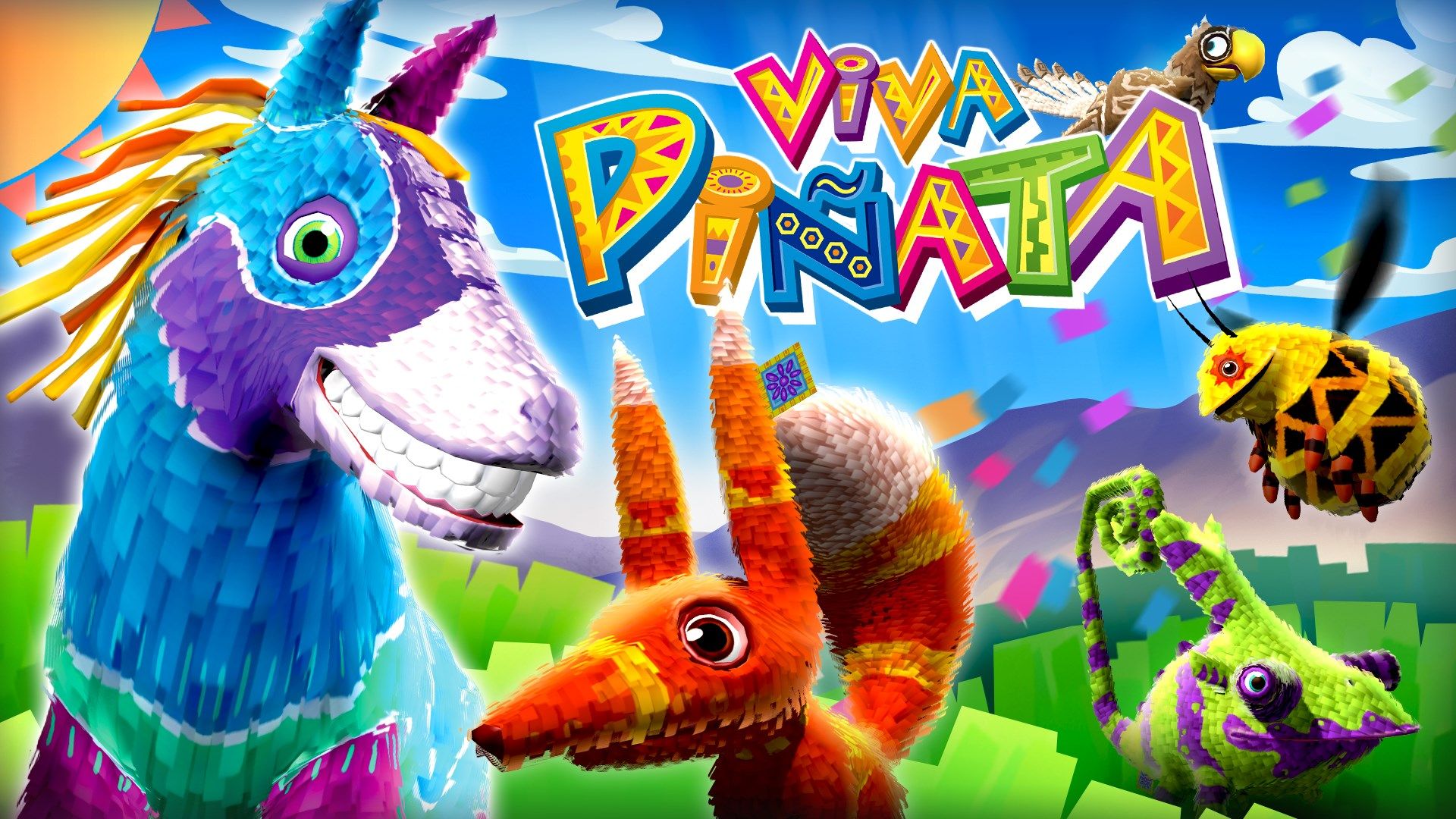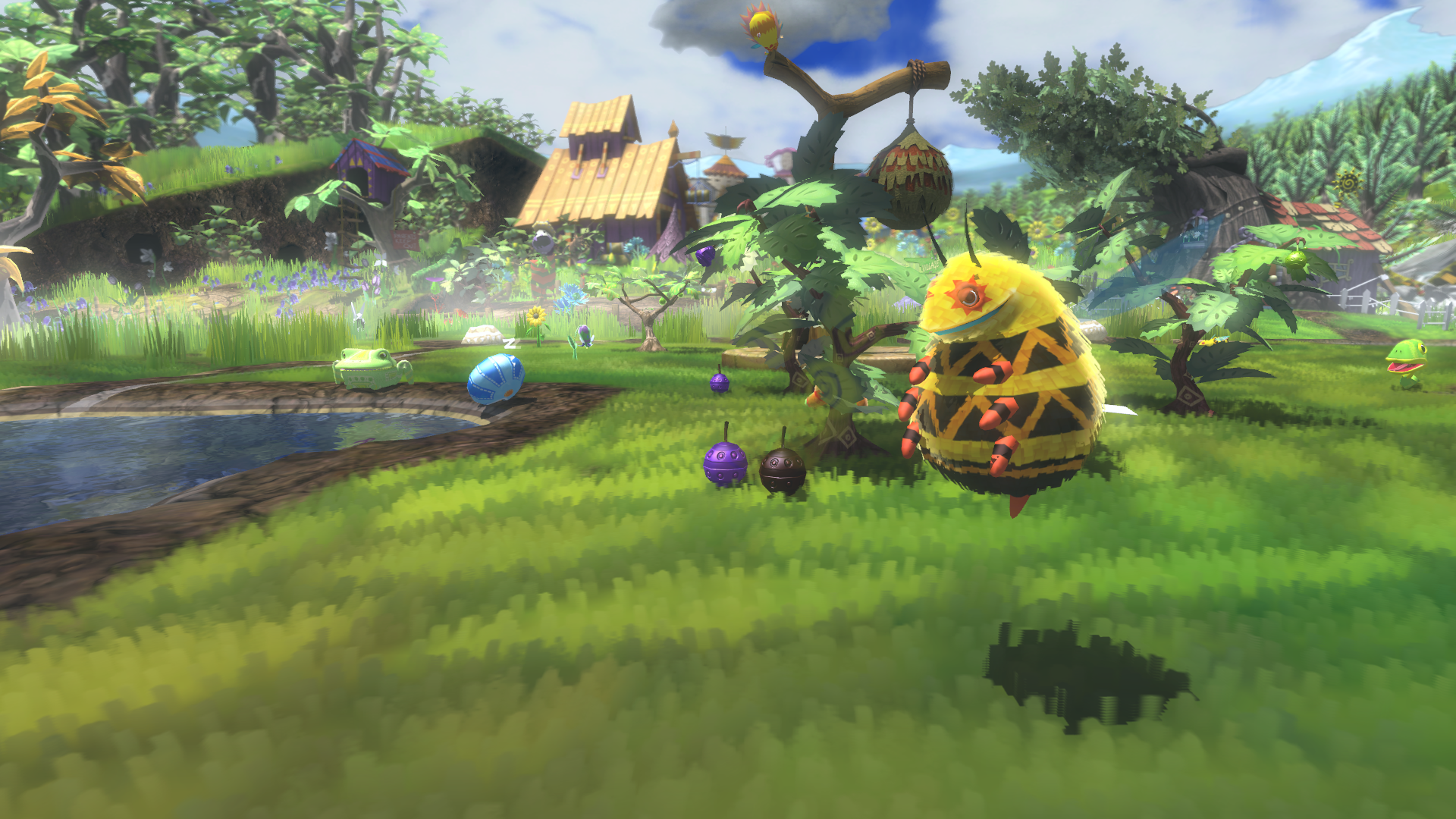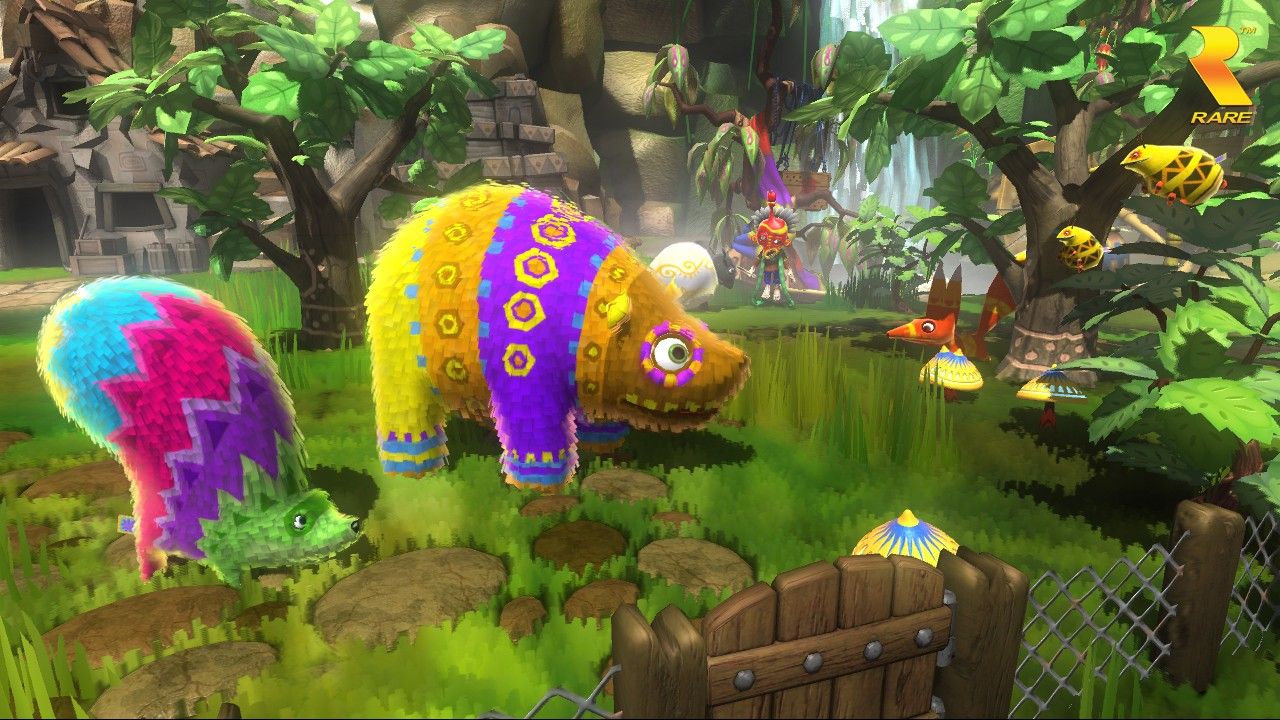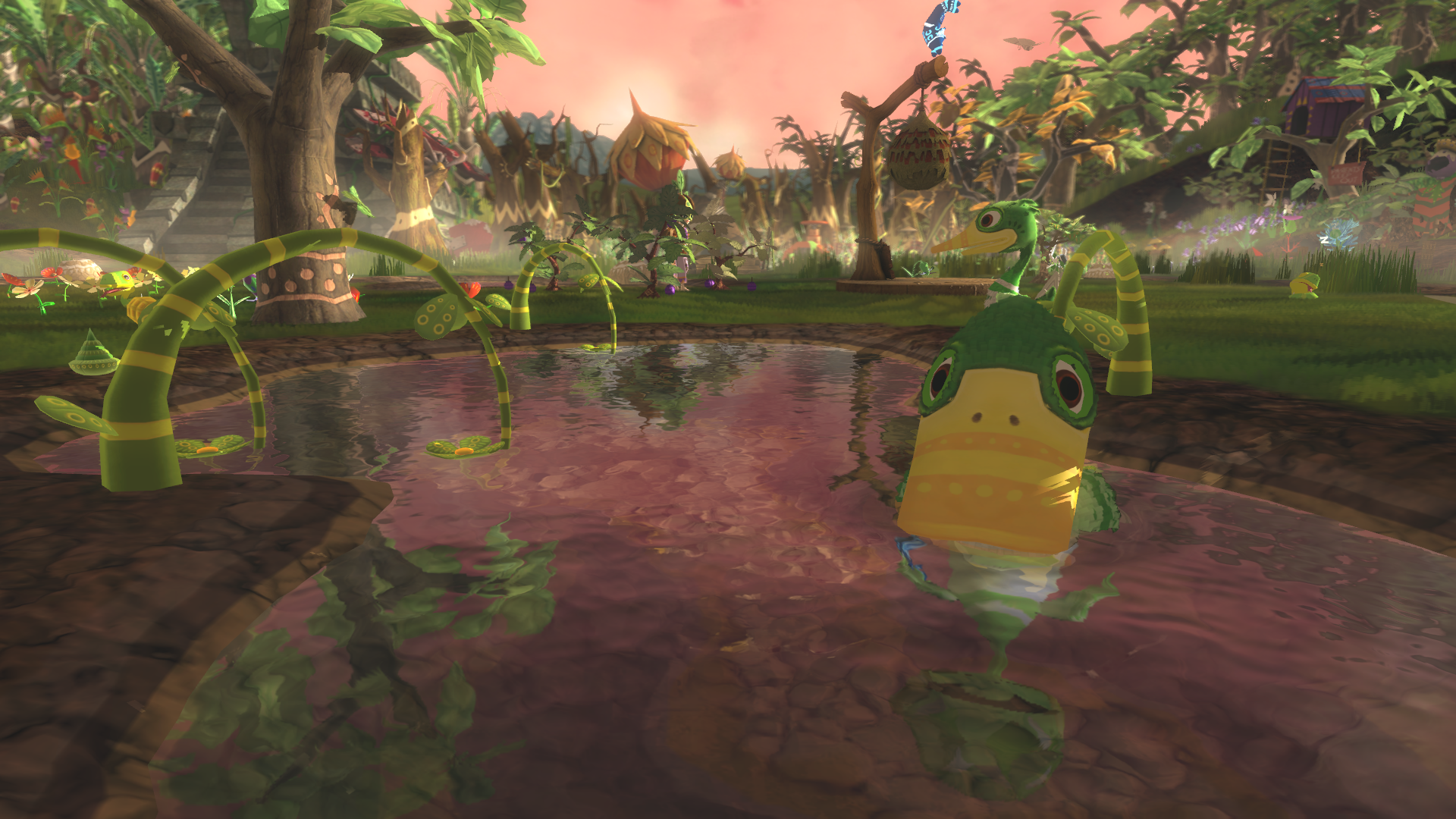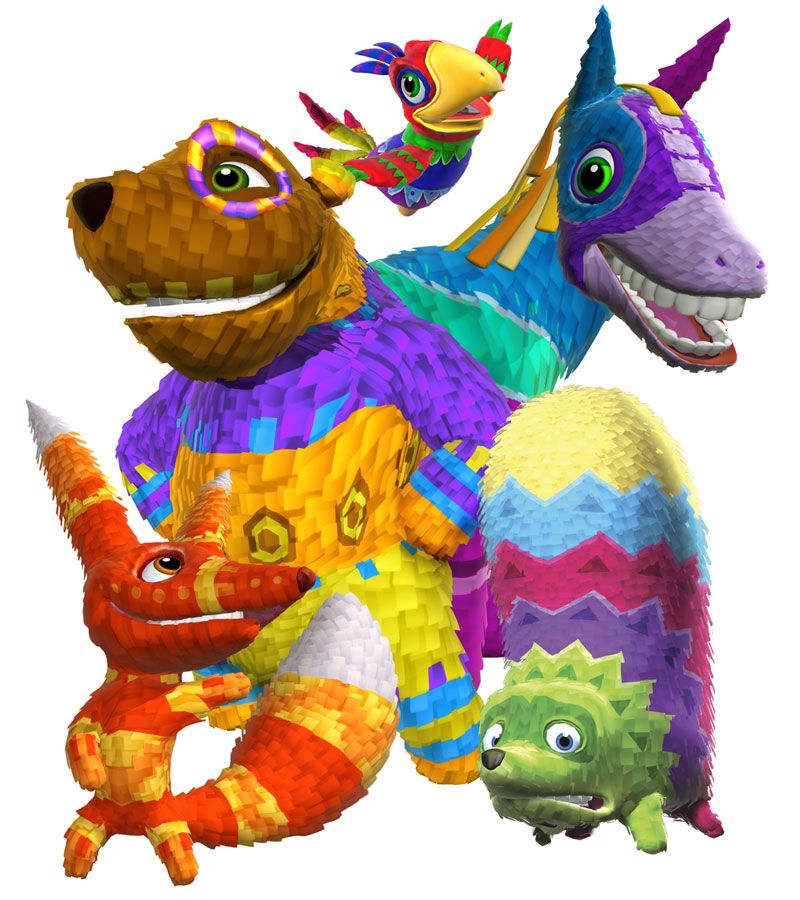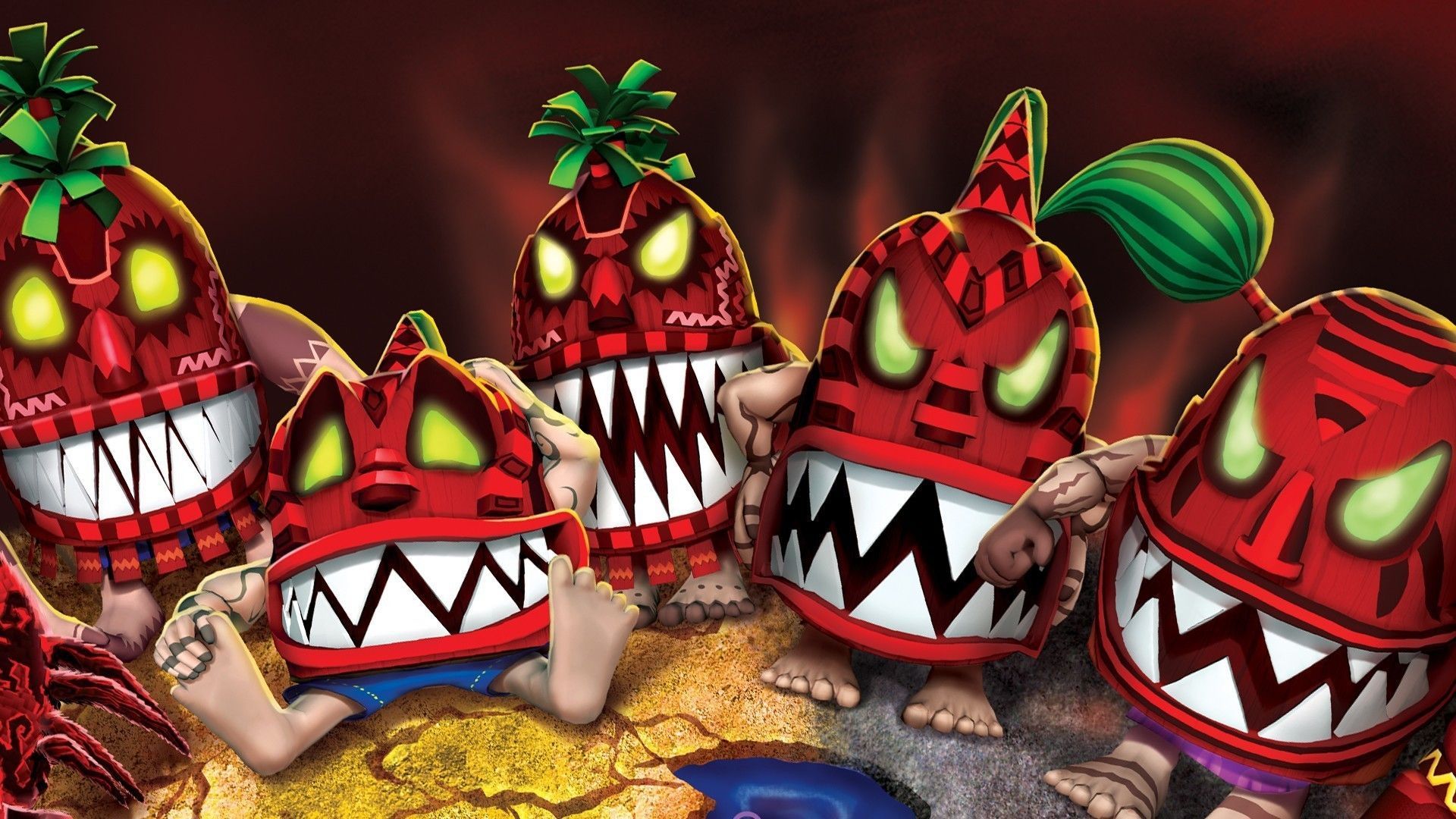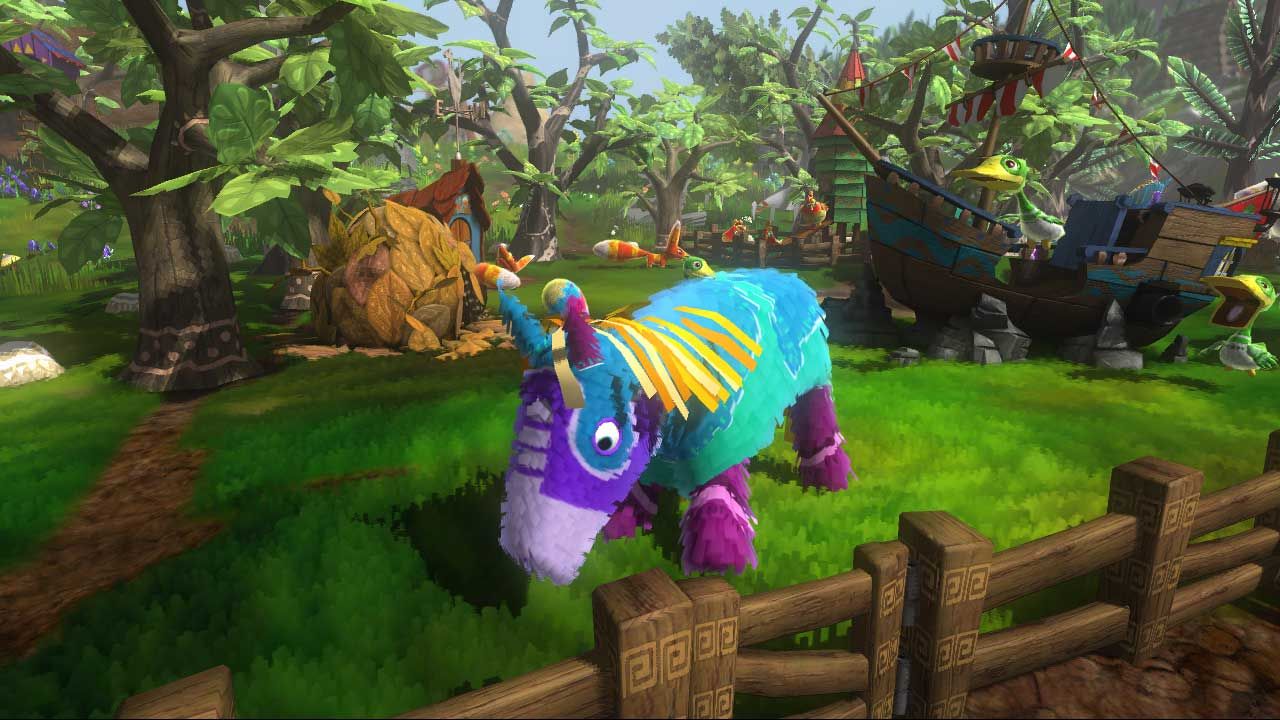“The first time I saw the game that would become Viva Pinata it was on a Palm Pilot, or one of those tiny handheld personal organisers,” lead designer Justin Cook tells me. “The idea was to have a plot of land where animals came into the garden and you could help nurture them and they’d want to stay. The basic idea was there straight away, but once more people started working on it kept changing and getting bigger and bigger.”
Viva Pinata is a classic in the eyes of many, capturing a feeling of infectious charm and unparalleled whimsy that saw it age like a fine wine. First launching for the Xbox 360 and PC way back in 2006, I decided to track some of the key creatives behind the project to ruminate on the game’s legacy 15 years later. Yes, it really has been that long.
“Development fell during the period where Microsoft was about to buy Rare,” Cook continues. “So we transitioned from doing quite a lot of work for Viva Pinata on what I assume was the GameCube onto the Xbox 360. But the original idea was all about [Rare founder] Tim Stamper’s garden where he’d see some rare things running around and he thought it would be a good thing to have these animals, plants they loved, and that sort of thing.”
“One of the nicest things about Viva Pinata was that it ended up in a place that was a million miles away from where it started,” artist Ed Bryan says. “So many of our games, like Banjo, we knew what it was going to be and what the characters were going to be like from a very early stage, but with Viva Pinata it sort of just came along during development.”
Rare was changing during the creation of Viva Pinata, the way in which it created games morphing to a corporate structure that much of the old blood wasn’t accustomed to. “There was a transitory period since before Viva Pinata there wasn’t really a structure to our development cycle in a formal way,” producer Chris Sutherland says of the acquisition. “We just kind of made games until they were finished, but this was something Rare was trying to get a handle on because as teams were getting larger, development times were getting longer. So there was an attempt to do that from both sides and Microsoft had a lot more experience with that kind of thing.”
Sutherland gained a reputation for being everyone’s favourite producer because he would always bring cakes into the office, camaraderie being common amongst the team much like it had been during Rare’s golden era. As the studio began working under Microsoft and tried to gain a more stable footing in terms of shipping products and nailing down release dates, people started drifting apart and moving onto different projects. “Viva Pinata was one of the last games where we got to work together in that manner,” Playtonic Games founder and designer Gavin Price remembers. “After that I went onto Banjo Kazooie: Nuts & Bolts but then there was a really big transitional period for multiple teams to very few all of a sudden and then Kinect was on the horizon.”
Following the release of Nuts & Bolts and Viva Pinata: Trouble in Paradise, Rare developed a number of Kinect titles before reinventing itself with the release of Sea of Thieves, returning to a focus on charming cartoon adventures instead of motion controls. Even during Viva Pinata’s initial development, new resources from Microsoft saw the team grow in size, allowing for a more ambitious scope without losing the studio’s classic touch. “It was a huge team at the time, we had roughly 70 people on Viva Pinata which was a big team back then,” Cook says. “It was a big expansion for Rare, since back then the teams were working in separate barns and you really didn’t see anybody else’s game until it was shown off at certain events, you would pretty much just work in isolation. There’s bad things about that and some good things as well, you weren’t distracted or hadn’t got to worry about seeing something and going, ‘Oh god why haven’t we done this in our game?’ because you didn’t see it. But sometimes someone did some work that would have benefited everyone but you didn’t know about it.
“It was one of the reasons I love Rare because it looked like they could tackle anything and have a really good go at it. It was one of the reasons I wanted to work there instead of somewhere like EA where you’d just be making FIFA forever. I didn’t know if I could stand that, and the other thing about Rare is that they made so many different types of games. You always had the hope that one day somebody would come up to you and go, ‘What game do you want to make?’ and Rare was a place where that could happen because they had the ability to explore almost any genre.”
Viva Pinata was exactly that, a wholesome game about managing a farm before the likes of Farmville broke into the mainstream, although Cook admits that perhaps an obsession with making it into a conventional game meant it was a little too hard, it certainly didn’t have the casual approachability of Harvest Moon or Animal Crossing.
It was a big project though, with Sutherland recalling nightmares he had when looking at the schedule ahead of release and how much work needed to be done. “It felt like we were going right up to the wire because you still couldn’t get through the entire game, there were so many interconnected parts that you always needed this animal to do this thing or get this to happen to your garden before this would trigger. To find a golden path where you earned all of the animals and you get all of the things through to the end, there never seemed to be a build where that seemed to happen. I was always like, ‘Is this game ever going to work?!’”
Thankfully, it did - and it was a success for Rare that helped spawn a sequel, spin-offs and a television show that was released alongside the original game. “Because of all of the interconnected systems, if you had one missing then it basically just didn’t work,” Cook adds. “Which was really stupid, but at the time I was young a foolish and I kept a lot of these worries inside my own head which was actually really useful. If people came up and asked me a question, I would pretty much know the answer. Now 15 years later, I think I’d struggle to name all of the animals. Viva Pinata had such a big amount of content that it was just difficult to keep track of, and we were just chasing threads all the time. ‘What’s this? What’s that? Oh god we’ve invented a plant and absolutely nothing is eating it. What can we do?’”
Cook’s preparation paid off, reflective of Rare’s continued focus on documentation and scheduling that ensured projects wouldn’t be subject to sudden delays and lack of organisation. “We documented everything, I’ve not done so much documentation for a game since. We kept track of every feature, every variation on that feature, and we turned them into statements that we crossed off so as people were doing work we could mark them on sheets on the walls which were absolutely plastered, it was like wallpaper all the way down the corridor.”
A game like this with no many variables inevitably resulted in a lot of crunch, although members of the team I spoke to don’t speak of these memories with disdain, they describe staying late and racking up hours as a necessary evil to get the job done, even if a larger number of employees were present to help move things along. “It was very much seen as a great thing,” Price says. “Your team was your family, and you’d just enjoy spending all of this time with them.”
Cook has similar memories. “I don’t remember anyone ever saying that we had to stay late, you just stayed because you had work to do,” he says. “It wasn’t that people were demanding you stuck around in the way we talk about crunch now, you were just there because the game wasn’t finished so you needed to put in the hours. But people put a lot of time into Viva Pinata. There were people there all of the time, late into the night, and we did crunch hard. But I didn’t really see it as that, we were just finishing the game.”
I suppose Rare didn’t help itself in a way, Viva Pinata had so many animals and so many mechanics that making sure everything was fit for release was no small undertaking. “There’s loads of animals in games, and we wanted ours to look like nobody else’s, and that’s fundamentally where the look came from, “Cook explains. “[art director] Ryan Stevenson came along and suggested Pinatas because they’re brightly coloured, they can be any animal you want and once he’d thrown that idea in there and we had that visual, it had a knock-on effect on the rest of the design, we had to talk about splitting them open and seeing the candy inside, and it actually helped with a load of things that we needed to get a natural feeling of what the game was going to be. Animals eat other animals and when you split them open there’s candy inside. That’s okay because if they were actually ripping each other apart we’d have never gotten released.
“Once we’d settled on that idea it was all about making enough assets, about somebody doing the animation, about somebody doing the tunes. We asked a lot from everybody because we were going to have 70 animals, and could we do 70 different tunes and 70 different animations for the dances? Obviously, Chris let us get away with that nonsense.”
As producer, Sutherland was often in the admin trenches for much of development, but still had plenty of chances to bounce ideas off the time while monitoring overall progress. “I remember with great joy that there was a nice spreadsheet that you’d all filled in with art,” Sutherland says. “It was being filled in, progress was being made, and it was a nice regular thing. There’s 70 different animals, tunes, and romance dances and because of that it was nice and regular. That was actually a good thing, you could be more predictable. There may be some romance dances that didn’t make it in for various reasons, but I don’t know if we can talk about them. I won’t mention one in particular.”
“I think it was all about the studio entertaining themselves,” Cook says. “They thought it was funny, so other people would think it was and thank goodness they did. But again, we were closer to the wire than Microsoft would have liked on some things. Stuff did get changed, but you know they’re a big corporation and they have to look after these things, it’s not that they were wrong for doing it, it was just a slight clash of culture.”
To close things off, it seems fitting to let the team reflect on the legacy of Viva Pinata 15 years on. “For me it was a learning curve as my first role as producer,” Sutherland says. “I remember it felt like there was always a massive queue of people outside the room wanting to ask me questions all the time, so I’d be constantly trying to talk to them or replying to an innumerable number of emails. It felt neverending because we were trying to make the game, it was quite a large team, we were doing the big TV show, and it was one of our first big projects for Microsoft. It was an eye opener for that side of things.”
While the genre has moved forward significantly since 2006, in many ways Viva Pinata was the first of its kind. “It wasn’t the first ever garden simulator or whatever you’d like to call it, but it was a novel idea at the time,” Bryan tells me. “In our previous games you could look at something like Banjo and say it comes from Mario, there’s a clear lineage there where Viva Pinata still stands on its own. But that’s good, and it was all a massive learning experience because it ended up being such a big package and was the biggest thing some of us had ever worked on at the time. Donkey Kong Country was a phenomenon back in 1994 but we only knew that after it had come out. With Viva Pinata, it had the potential to be bigger than Rare, and if it took off it could have been Microsoft’s money printing machine for the rest of time.”
For Cook, it helped cement his career and gave everyone who worked on the project a voice to be remembered. “I wouldn’t have been a designer if it wasn’t for this game,” Cook admits. “I found out it was a gardening game and thought, ‘right, I’ve got to make the best goddamn gardening game I’ve ever seen’ otherwise I feared my dream of design would be over immediately. I was lucky to be on a team of experienced people so they taught me how to work properly because I basically knew nothing and was rubbish at everything. Until I got myself in shape I wasn’t any good for the project, fortunately over the course of development we managed to get a good game out of it, so it couldn’t have been that bad.
“All of the voices were ours, and anybody who worked on Viva Pinata you can look and see something they did in that game. We talk about big games now, and work gets almost forgotten and people have worked so hard on things you wouldn’t even notice. But everything’s on the screen in this game, so almost anybody that worked on it can point to the screen and say, ‘I did that’ and I just don’t think you can do that much anymore.”

